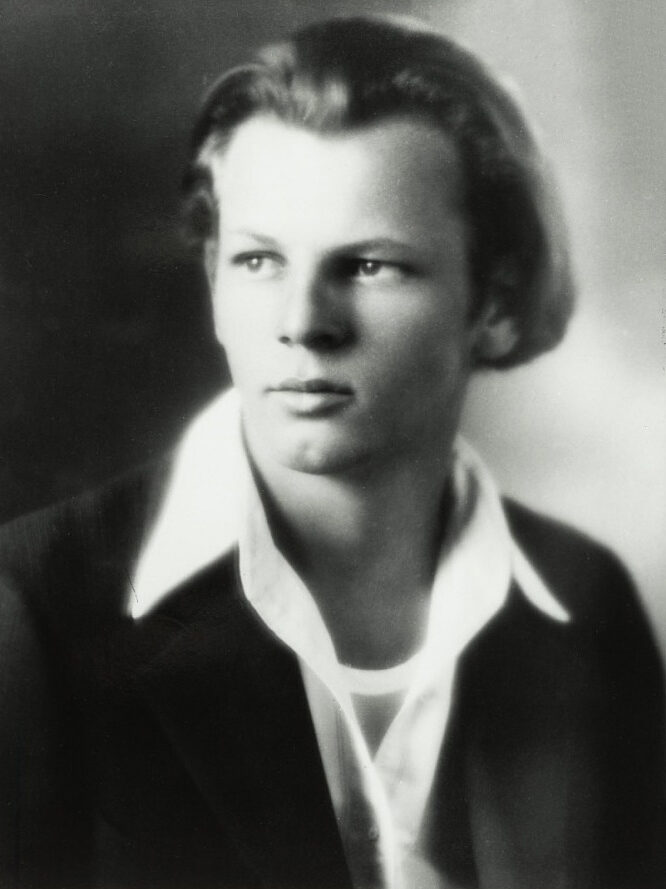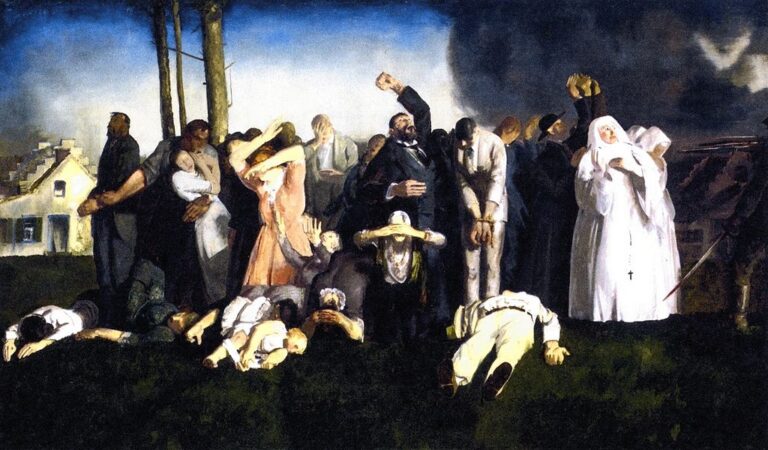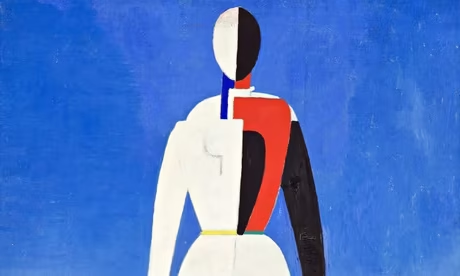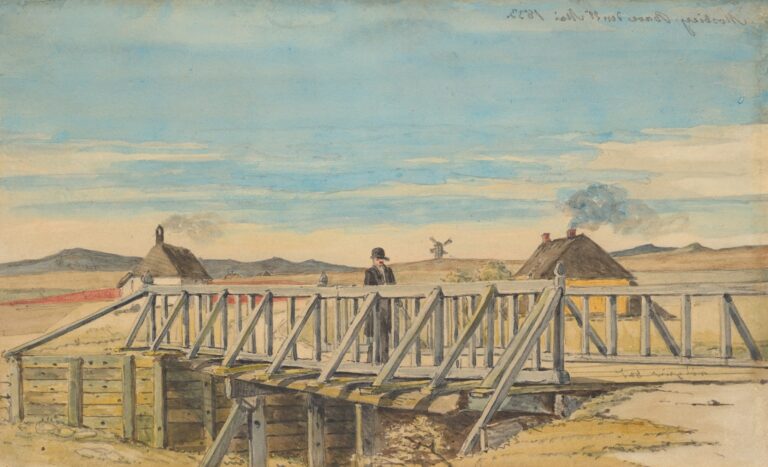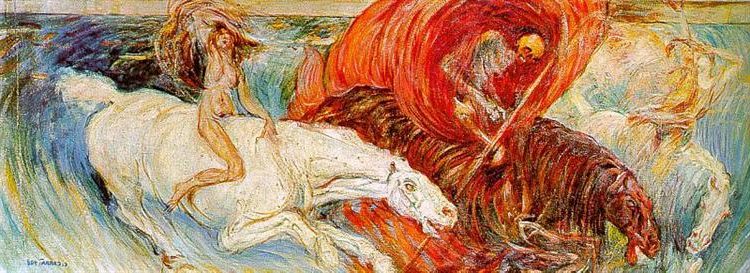Jackson Pollock Painter: Revolutionary Pioneer of Abstract Expressionism
Born: January 28, 1912, Cody, Wyoming, U.S.
Death: August 11, 1956, Springs, New York, U.S.
Art Movement: Abstract Expressionism
Nationality: American
Influenced By: José Clemente Orozco
Institution: Manual Arts High School and Art Students League
Jackson Pollock Painter: Revolutionary Pioneer of Abstract Expressionism
Jackson Pollock’s Biography
Jackson Pollock emerged as one of the most influential figures in American art history. His unique painting style and tumultuous personal life shaped both his artistic development and his lasting legacy in the modern art world.
Early Life and Education
Jackson Pollock was born on January 28, 1912, in Cody, Wyoming. He grew up in Arizona and California with his four brothers.
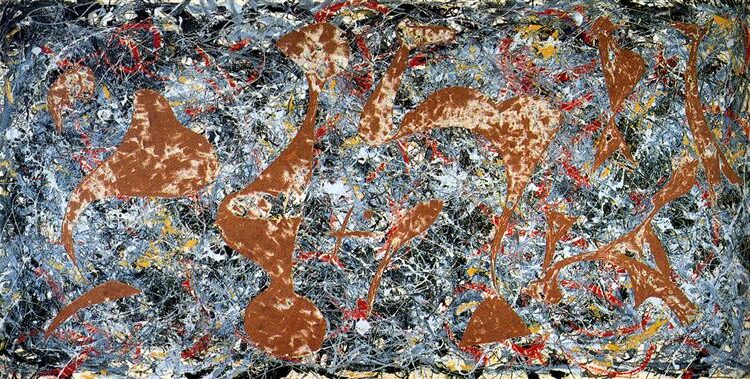
Number 7 (Out of the Web), 1949 by Jackson Pollock
His early exposure to Native American art influenced his later work.
As a teenager, Pollock attended Manual Arts High School in Los Angeles, where he first developed an interest in painting.
In 1930, Pollock moved to New York City to study at the Art Students League. There, he trained under Thomas Hart Benton, whose rhythmic style affected Pollock’s early paintings.
These formative years introduced Pollock to various artistic traditions. However, he also struggled with alcoholism during this period, a problem that would resurface throughout his life.
Career Beginnings
Pollock’s professional career took off during the Great Depression. He worked for the Works Progress Administration’s Federal Art Project from 1938 to 1942, which provided steady income.
His early work showed influences from Mexican muralists like José Clemente Orozco and David Alfaro Siqueiros. During this time, he experimented with new techniques and materials.
In 1943, Peggy Guggenheim gave Pollock his first solo exhibition at her Art of This Century gallery. She also commissioned a mural for her home, which helped establish his reputation.
By the mid-1940s, Pollock began developing his distinctive “drip” technique. This method involved pouring or splashing liquid paint onto canvases laid on the floor.
Major Works and Influences
Pollock’s breakthrough came with his “drip period” from 1947 to 1950. During these years, he created his most famous works, including “Autumn Rhythm,” “Number 1A, 1948,” and “Lavender Mist.”
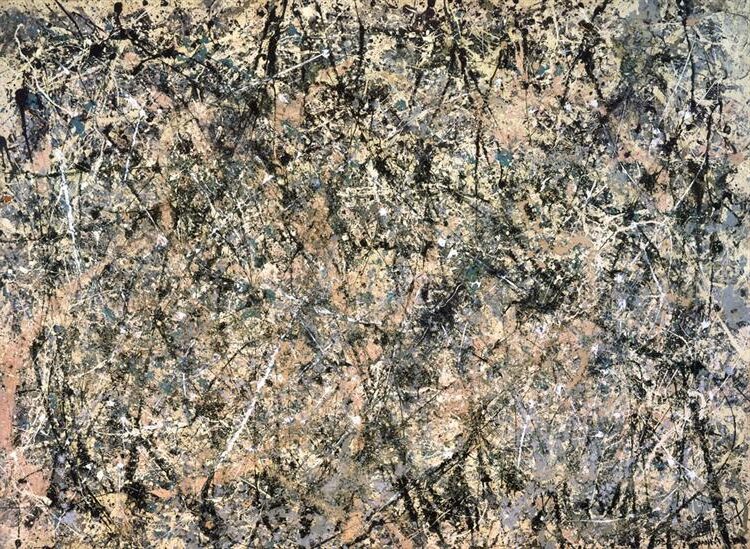
Number 1 (Lavender Mist), 1950 by Jackson Pollock
These paintings featured intricate webs of paint with no single focal point.
Pollock worked on unstretched canvas laid on his studio floor, moving around all sides while applying paint.
His technique reflected several influences:
- Surrealist automatic drawing
- Native American sand painting
- Jungian psychology and its emphasis on the unconscious
Time magazine nicknamed him “Jack the Dripper” in 1956. This period represents Pollock’s most innovative and influential contribution to modern art.
Personal Life
Pollock married fellow artist Lee Krasner in 1945. Their relationship proved crucial to his artistic development, as Krasner provided both emotional support and professional guidance.
The couple moved to Springs, East Hampton on Long Island. Their barn became Pollock’s studio, where he created his most iconic works.
Pollock struggled with severe alcoholism throughout his adult life. His drinking often led to volatile behavior and periods of depression.
His marriage to Krasner experienced significant strain due to his alcoholism and affairs. In 1956, Pollock began a relationship with Ruth Kligman, further destabilizing his personal life.
Despite these challenges, Krasner dedicated herself to preserving and promoting Pollock’s artistic legacy after his death.
Death and Legacy
Pollock died in a car accident on August 11, 1956, at age 44. He was driving while intoxicated near his home in Springs, New York.
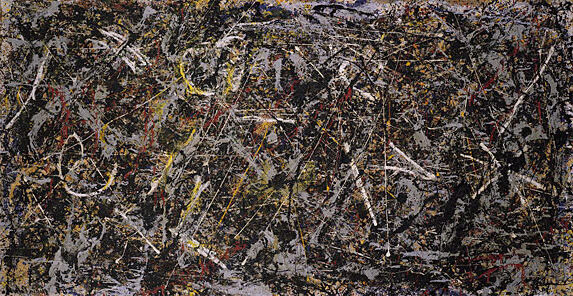
Alchemy, 1947 by Jackson Pollock
His death cut short a brilliant career but cemented his legendary status.
Major retrospectives followed at institutions like:
- The Museum of Modern Art (1957, 1967)
- The Tate Gallery (1999)
- The National Gallery of Art (2014)
His paintings now command some of the highest prices in the art market. In 2006, “No. 5, 1948” reportedly sold for $140 million.
Pollock’s work continues to inspire artists today. His radical approach to painting freed subsequent generations to explore art beyond traditional boundaries.
Artistic Style and Techniques
Jackson Pollock revolutionized modern art through his distinctive approach to painting. His innovative methods broke traditional boundaries and created a new visual language that influenced generations of artists.
Development of Abstract Expressionism
Pollock emerged as a leading figure in Abstract Expressionism during the 1940s. This movement rejected representational art in favor of emotional expression through abstraction.
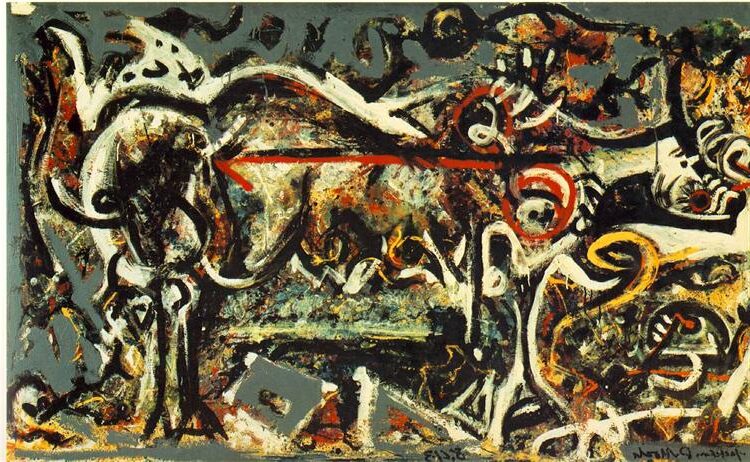
The She-Wolf, 1943 by Jackson Pollock
His early work showed influences from Surrealism and indigenous American art. Pollock studied under Thomas Hart Benton but gradually moved away from his teacher’s regionalist style.
By the mid-1940s, Pollock had begun experimenting with automatic drawing techniques. These methods allowed his unconscious mind to guide the creative process.
Critics noted how his paintings became increasingly non-representational, focusing on pure emotional expression rather than depicting recognizable forms.
Drip Technique
Pollock developed his famous “drip” technique around 1947. He placed large canvases on the floor rather than using an easel, allowing him to approach his work from all angles.
Using hardened brushes, sticks, and even basting syringes, he poured or dripped paint onto the canvas. This method created intricate webs of color that recorded his movements around the painting.
The technique earned him the nickname “Jack the Dripper” from critics. His unique approach removed the traditional direct contact between tool and canvas.
The physical nature of Pollock’s process was crucial to his art. He moved around and sometimes stepped onto his canvases, creating what art historians call “all-over” compositions with no central focus point.
Color and Composition
Pollock’s color choices evolved throughout his career. His early works featured earthy tones while his mature drip paintings often incorporated vibrant colors alongside black and white.

Autumn Rhythm (Number 30), 1950 by Jackson Pollock
He created rhythm through his overlapping lines and color patterns. These complex compositions engaged viewers through their visual dynamism and energy.
The scale of his works was deliberately immersive. Large canvases like “Autumn Rhythm” (1950) at nearly 9 by 18 feet created environments rather than mere pictures.
Pollock rejected traditional composition rules. Instead of planned arrangements, his paintings developed organically through the process of creation itself.
Innovations and Collaborations
Pollock’s approach challenged fundamental assumptions about art-making. He eliminated the distinction between figure and ground that had dominated Western painting for centuries.
His wife and fellow artist Lee Krasner provided crucial feedback on his work. Their creative partnership helped refine his techniques and artistic vision.
In 1950, photographer Hans Namuth documented Pollock’s painting process. These famous images and films revealed the physical, almost dance-like nature of his technique.
Pollock collaborated with other artists and poets of the New York School. These connections fostered creative exchanges that influenced his development as an artist.
His innovations extended beyond technique to fundamentally question what constitutes a painting. By focusing on the act of creation rather than representation, Pollock helped redefine art for the modern era.
Cultural Impact and Recognition
Jackson Pollock’s artistic innovations transformed modern art and established him as a cultural icon. His groundbreaking techniques and distinctive style continue to influence artists and command attention in the art world decades after his death.
Exhibitions and Notable Sales
Pollock’s works have been featured in major exhibitions worldwide since the 1940s. The Museum of Modern Art in New York held significant retrospectives in 1956 and 1998, cementing his place in art history. His painting “Number 17A” sold for $200 million in 2015, making it one of the most expensive paintings ever sold.

Number 17A, 1948 by Jackson Pollock
The Guggenheim Museum, Tate Modern, and Centre Pompidou regularly display his works in their permanent collections. These institutions recognize his profound impact on abstract expressionism.
Pollock’s studio in Springs, New York is now the Pollock-Krasner House and Study Center. It welcomes thousands of visitors annually who can see the paint-splattered floor where he created his most famous works.
Influence on Modern Art
Pollock revolutionized painting technique with his “action painting” approach. His method freed artists from traditional brushwork and inspired new movements in abstract art.
Artists like Cy Twombly and Joan Mitchell built directly on Pollock’s innovations. His influence extends beyond painting to performance art, where his physical approach to creating resonates with performance artists.
Pollock’s work changed how people think about artistic process. He showed that the act of creating could be as important as the final product.
His techniques appear in unexpected places. Fashion designers, filmmakers, and architects have all drawn inspiration from his dynamic compositions and energetic style.
Critical Reception and Analysis
Critics initially divided over Pollock’s work. Some dismissed it as chaotic splatter, while others recognized its revolutionary potential. Time magazine famously dubbed him “Jack the Dripper” in 1956.
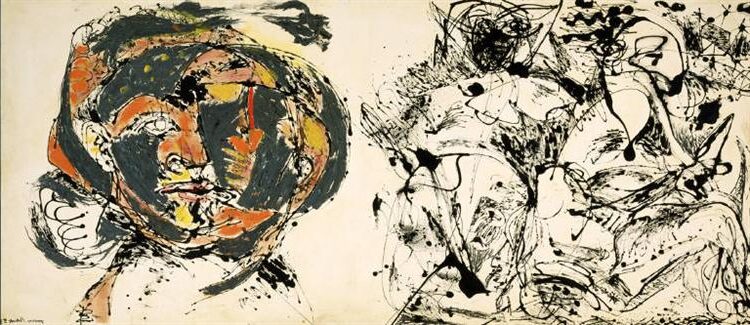
Portrait and a Dream, 1953 by Jackson Pollock
Art historian Clement Greenberg championed Pollock, calling him “the greatest painter alive.” This support helped establish Pollock’s reputation despite public skepticism about abstract expressionism.
Academic analysis of Pollock’s work reveals complex mathematical patterns. Researchers have identified fractal structures in his paintings that demonstrate sophisticated spatial organization beneath apparent randomness.
Pollock’s psychological state often enters critical discussions. His struggles with alcoholism and depression are seen as influences on his intense, emotionally charged works.
Frequently Asked Questions
Jackson Pollock revolutionized 20th century art with his innovative techniques and influential abstract expressionist works. His unique approach continues to generate questions about his methods, impact, and legacy in the art world.
What are the defining characteristics of Jackson Pollock’s painting style?
Pollock’s distinctive style features energetic, seemingly chaotic compositions created through his unique “action painting” approach. He abandoned traditional brushes, instead pouring or dripping paint onto canvases laid flat on the floor.
His works lack a central focal point, creating an “all-over” composition where every part of the canvas holds equal importance. Pollock’s paintings typically display dense layers of paint with intricate webs of lines and spatters forming complex visual rhythms.
The artist’s physical movements became an integral part of the creative process, with each painting capturing the energy and motion of his body as he worked.
How did Jackson Polick contribute to the Abstract Expressionist movement?
Pollock became the most famous figure in Abstract Expressionism, helping shift the center of the art world from Paris to New York in the post-WWII era. His radical approach to painting emphasized spontaneity and artistic freedom over controlled representation.
He demonstrated that abstract art could express intense emotion and spiritual depth without recognizable imagery. Pollock’s work embodied the movement’s core values of individuality, freedom, and artistic risk-taking.
His success helped validate Abstract Expressionism as a legitimate artistic movement to both critics and the public. Many art historians consider him the most influential American painter of the 20th century.
What is the significance of Pollock’s ‘drip technique’ in modern art?
Pollock’s drip technique represented a radical break from traditional painting methods that had dominated Western art for centuries. It freed painting from direct representation and conventional composition rules, expanding what could be considered fine art.
The technique emphasized the physical act of creating art as much as the finished product. This process-oriented approach influenced later art movements including Performance Art and Process Art.
His innovative method showed that everyday materials and unconventional techniques could create profound artistic expressions. The drip technique also demonstrated that chance and spontaneity could produce works of significant artistic merit.
Which Jackson Pollock pieces are considered his most influential works?
“Autumn Rhythm” (1950) exemplifies Pollock’s mature drip style, featuring intricate patterns that seem to extend beyond the canvas edges. “Number 1, 1950 (Lavender Mist)” showcases his masterful control of color and rhythm despite the seemingly random application.
“One: Number 31, 1950” represents one of his largest and most ambitious works at nearly 9 by 18 feet. “Blue Poles” (1952) remains controversial for its deliberate introduction of vertical elements into his typically non-directional compositions.
Earlier works like “Mural” (1943) illustrate his transition toward the drip technique while still maintaining some figurative elements. “Full Fathom Five” (1947) is notable for incorporating non-paint items like cigarette butts and coins embedded in its surface.
How did Pollock’s personal life influence his artistic career?
Pollock struggled with alcoholism throughout his adult life, which affected both his creative output and personal relationships. His tumultuous marriage to fellow artist Lee Krasner provided both support for his work and artistic feedback.
Pollock’s move from New York City to Long Island in 1945 gave him the space to develop his iconic drip paintings on large canvases. His psychological troubles led him to undergo Jungian therapy, which introduced him to archetypal imagery that influenced his early work.
Fame created tremendous pressure on Pollock, contributing to periods of creative block and renewed alcohol abuse. His early death at age 44 in a car accident while intoxicated cut short his artistic development but cemented his legendary status.
What critical reception did Jackson Pollock’s artwork initially receive?
Many initial reactions to Pollock’s drip paintings were hostile. Critics dismissed them as chaotic and lacking skill. Time magazine mockingly nicknamed him “Jack the Dripper,” reflecting widespread public skepticism about abstract art.
Influential critic Clement Greenberg became Pollock’s champion. He argued that Pollock’s work represented the most advanced development in modern painting. The 1949 Life magazine article asking “Is he the greatest living painter in the United States?” brought Pollock unprecedented publicity.
European critics initially resisted Pollock’s work. They saw it as representing aggressive American cultural imperialism. By the time of his death in 1956, critical opinion had largely shifted in his favor. Critics recognized his profound innovation and artistic significance.


